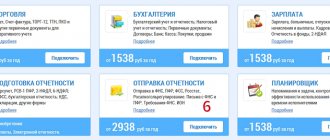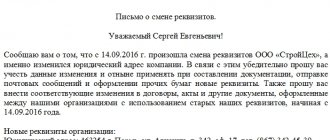Features of accounting in public catering
Almost every food service enterprise operates three business processes simultaneously.
- Production - preparing dishes from purchased products and their subsequent sale.
- Trade – sale of prepared meals, drinks and related products purchased from other organizations.
- Services – for example, organizing banquets.
All these types of activities are closely intertwined, which is reflected in accounting.
Accounting for the receipt of products at the warehouse
When products arrive at the warehouse, the following must be considered:
- The same product can be considered both as a commodity and as a raw material for the manufacture of dishes.
For example, fruits can be sold individually or used to make salads. Or mineral water can be sold as a product (in bottles), or considered as a component for making cocktails. Therefore, the same product can be accounted for on account 10 “Raw materials” or account 41 “Goods”.
The offsetting account for the loan depends on how the products (goods) are purchased. If they are purchased from an organization or individual entrepreneur by bank transfer, then account 60 “Settlements with suppliers and contractors” is used.
But sometimes you urgently need to buy some component for a dish, and there is no time to wait for an order from a regular supplier to arrive. Then an employee of the company can purchase the necessary products, and in accounting this is reflected in account 71 “Settlements with accountable persons”.
DT 10 – KT 60 (71) – if the product will be used in the kitchen
DT 41 – KT 60 (71) – if it is resold unchanged
DT 19 – CT 60 – if the supplier and the company itself work with VAT
Since the product is actually the same, it is often used for purposes other than those for which it was originally intended.
For example, there were many orders for fruit salads and some of the apples that were intended for sale as goods were spent to prepare them.
Then the so-called “re-grading” occurs. This means that the total amount of valuables (apples in the example) corresponds to the accounting data, but the data for individual accounts diverges. Such deviations are identified based on the results of the inventory, after which it is necessary to make changes to the accounting.
Inventory in public catering should be carried out at least once a week. And many businessmen working in this area check the balances in the warehouse and kitchen every day.
- Products may come in different packaging.
It all depends on how the incoming product is accounted for. If it is a product, then each type of packaging must be taken into account separately, since this is a separate item in the price list, which will have its own markup.
If the product will be used for preparing dishes, then all receipts in different packaging must be “reduced to a common denominator.” As a result, one type of product will be taken into account as one item, in convenient units of measurement: liters, kilograms, etc.
Basic document flow in a restaurant
What documents should a restaurant have?
To start a restaurant in Ukraine, you will definitely need documents for a cash register:
- Registrar's passport
- Registration certificate
- Service agreement at the service center
- Certificate of filling
- Technical conclusion
- KURO (book of accounting of settlement transactions)
- Sealed receipts
For Russia, according to the requirements of 54-FZ, you need to enter into an agreement with the OFD (fiscal data operator) and collect documents for fiscalization, including for the fiscal registrar. The rest of the list is not much different:
- Alcohol and tobacco licenses (originals)
- Consumer corner for catering
- Magazines and instructions on labor protection
- Sanitary records for employees
- Fire safety magazines and instructions
- Sanitary certificates from suppliers
- Results of processing food samples from SES
All agreements with third parties are separate (for example, if you rent premises for a restaurant). But the organization of accounting and reporting in a restaurant does not end there, so let’s move on.
Rental agreement for restaurant premises
It is important to indicate in the lease agreement:
- payment period;
- rental pricing per square meter and its changes;
- frequency of rent changes (increases) and what it is tied to;
- rules for using the rented premises;
- terms and compensation upon termination of the contract by the lessor or lessee.
Later in the article we will look at contracts with suppliers.
Calculation of food costs
The main documents that are used when calculating the cost of dishes are the technological map and the calculation card (form OP-1).
A technological map is essentially a recipe for preparing a dish. It contains a list of components in natural units per serving (or several servings). There is no established form for this document, so each catering enterprise develops its own forms.
The cost card calculates the cost of the dish in rubles. Form OP-1, along with other documents used in the accounting of public catering enterprises, was approved by Decree of the State Statistics Committee of the Russian Federation dated December 25, 1998 No. 132. Although the use of this document is not mandatory today, most businessmen prefer not to “reinvent the wheel”, but to use proven forms .
The production of many dishes consists of several stages. First you need to make a semi-finished product, and then use it in the production of the final product.
For example, if a recipe requires sauce, then you first need to draw up a separate flow chart for it and calculate the cost. Then the cost of the finished sauce should be included in the costing card of the “final” dish.
When preparing complex dishes, for ease of accounting, additional account 21 “Semi-finished products of own production” is usually used.
DT 10 – KT 60 (71) – purchase of “initial” products
DT 21 – KT 10 – transfer of products for processing
DT 20 – KT 10 (21) – products and semi-finished products used in the production of dishes
DT 90.2 – KT 20 – cost of sold dishes written off
Inventory in a restaurant
As a rule, inventory is carried out every 1st day of the month; before it, it is necessary to carry out all incoming and outgoing documents. If you have a bar, then it is better for the accountant to carry out the inventory together with the senior bartender or an authorized person. In the kitchen, inventory is carried out with the chef and technologist.
After the inventory is completed, the data is processed and the remainder is entered into the cafe automation program, as is done, for example, in Poster. All semi-finished products for the kitchen and bar are divided into separate components and added to the actual balance. Next, we analyze the inventory results. If there are discrepancies or other questions, we check the receipts and expenses, the technological map, and the percentage of product processing.
If there is an error, it must be corrected so as not to enter incorrect data into the system. Then you can forget about it and only make the problem worse.
If a question arises regarding the percentage of loss during primary processing of the product:
- We carry out additional study;
- We create an elaboration report and recalculate the percentage of loss.
If the problem is in the technical map, then we do additional elaboration of the dish and recalculate the entire consumption of the products involved for the period. There is also a partial inventory , which is carried out to check only one category of goods, if, after correcting all the shortcomings, you still have a shortage or surplus.
Accounting system for cafes and restaurants on a tablet
Production control, recipes and detailed inventory control
Revenue accounting in public catering
Catering enterprises can generate revenue in different ways:
- From cash sales.
- Using bank cards of individuals.
- Using non-cash payments, for example, when organizing corporate events.
All these options should be reflected in accounting.
DT 50 – CT 90.1 – cash proceeds
DT 57 – CT 90.1 + DT 51 – CT 57 – money was received using an individual’s card using acquiring. An additional entry with account 57 “Transfers in transit” is necessary because banks usually do not immediately credit the funds debited from the card to the company’s account.
DT 62 - KT 90.1 + DT 51 - KT 62 - revenue from non-cash payments
Meals for posting employees - compensation for the cost of meals for employees
Often, an enterprise does not provide free lunches to staff, but simply compensates them for the cost of food. The chart of accounts provides for the use of:
- account 73 “Settlements with personnel for other operations” - it reflects the implementation of payments to personnel not related to wages and compensation of expenses of accountable persons (payment of compensation for the cost of food from funds taken at the cash desk will be reflected in the DEBIT of account 73 in correspondence with the account 50 "Cashier");
- sch. 91 “Other income and expenses” subaccount 91-2 “Other expenses” - to reflect non-operating expenses.
Let's look at an example of how an accountant records the company's expenses associated with paying employees compensation for the cost of lunches. Let’s imagine that employees of Oblaka LLC receive monthly compensation for the cost of food in the amount of 1,500 rubles:
| DEBIT | CREDIT |
| 91-2 | 73 |
| 99-2 | 68 |
| 73 | 68 |
| 73 | 50 |
Accounting for expenses in public catering
Direct expenses, that is, the cost of food produced or goods sold, are reflected in accounting using standard posting.
DT 90.2 - KT 20 (41)
All other expenses of catering enterprises are considered indirect. These are staff salaries, rent, various “incoming” services (for example, musical accompaniment), etc.
Accounting in public catering combines the features of both production and trade. Therefore, the distribution of overhead costs can be carried out in two ways:
- Using accounts 25 “General production expenses” and 26 “General expenses”.
DT 25 (26) – CT 70 (69,10,02,60...)
DT 20 – KT 25 – general production costs are written off in proportion to the selected base (for example, revenue or direct material costs)
DT 90.2 – KT 20 (26)
- With all overhead expenses reflected in account 44 “Sales expenses”.
DT 44 – CT 70 (69,10,02,60...)
DT 90.2 - KT 44
During the operation of catering enterprises, “extra” costs often arise: food spoilage, broken dishes, etc.
To account for them, you need to use account 94 “Shortages and losses from damage to valuables.”
DT 94 – KT 10 (41) – damage detected
DT 73 – CT 94 + DT 50 – CT 73 – expenses attributed to the guilty party
DT 91 - CT 94 - expenses written off if the perpetrators are not identified
Losses within the limits of natural loss reduce the tax base. For products, the specified standards are established by order of the Ministry of Industry and Trade of the Russian Federation dated March 1, 2013 No. 252. For losses of dishes and table linen, order of the USSR Ministry of Trade dated December 29, 1982 No. 276 is still in effect.
Conclusion
The basis of accounting in public catering is the calculation of the cost of food. It is important to correctly account for the products at the “input”, write them off in accordance with established standards and regularly monitor balances.
The distribution of overhead costs in public catering can be carried out according to the rules established for both production and trade.
Accounting for goods and raw materials
It is vital for a restaurant to keep separate records of goods and raw materials that are used in the production of its own products. If there are raw materials, there are waste and leftovers, they also need to be taken into account so as not to literally throw money into the trash.
Returnable waste, you can reuse. For example: shards and trimmings of chocolate, which are re-melted and used in a new batch. There is non-returnable waste, which can only be used for household needs a second time. Sometimes you can sell them to someone. For example, empty boxes or bottles that you can use for decorative purposes.
Inventory
Inventory is a comparison of the actual balances of goods or raw materials in warehouses with the balances of the same items according to accounting data. As a result of the inventory, commodity losses are determined.
Commodity losses are divided into two categories: standardized and non-standardized. The first category is the natural loss of products in weight or volume. That is, normal production costs. For example, flour that the cook overweighted by half a gram or spilled a little.
You need to worry about non-standardized balances. This is damage or theft of products, things for which specific people on the team should be responsible. For this control, regular inventory is needed.









